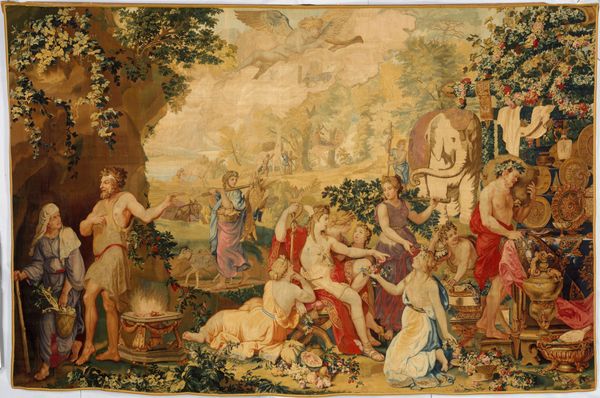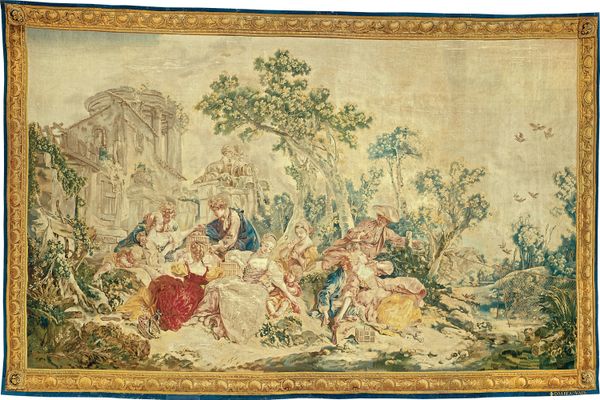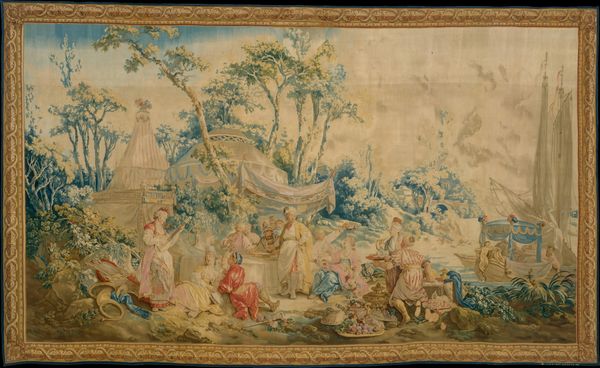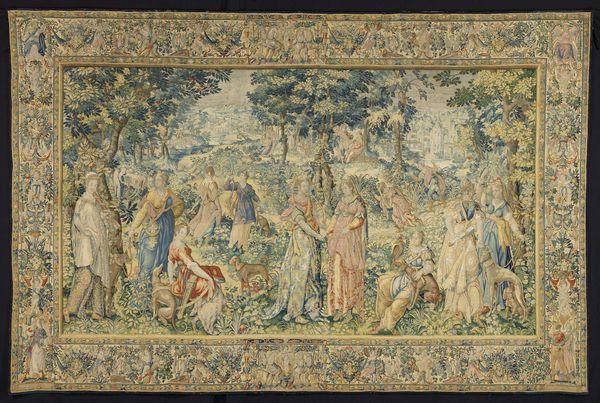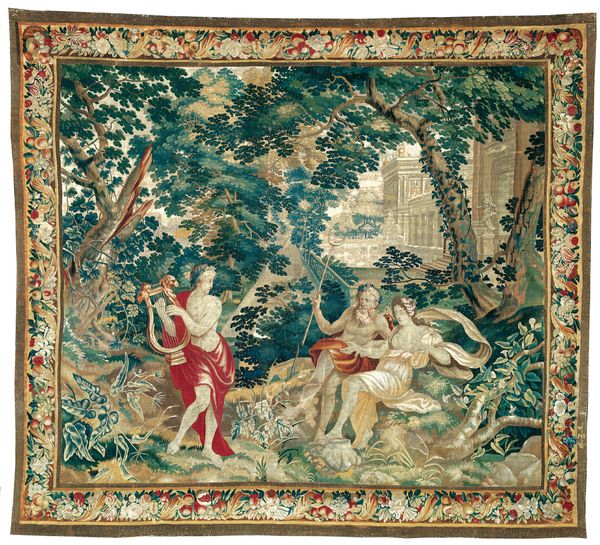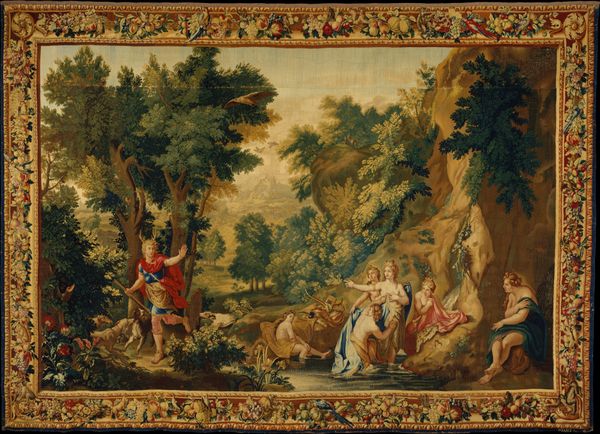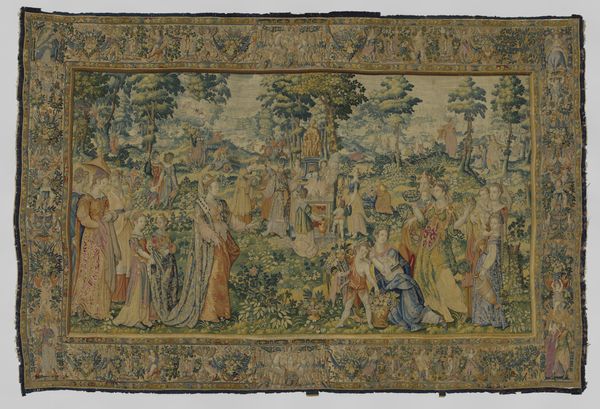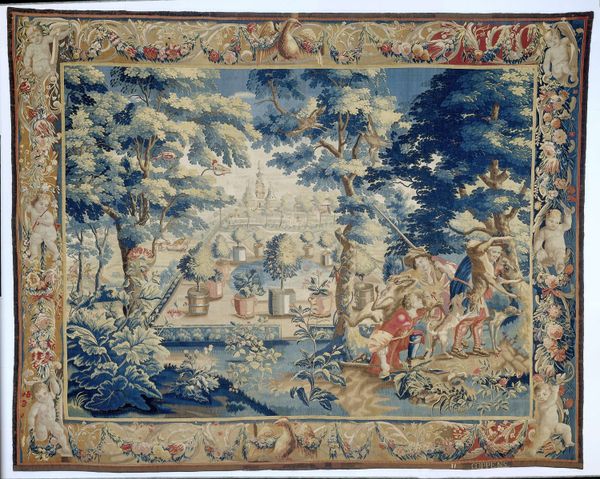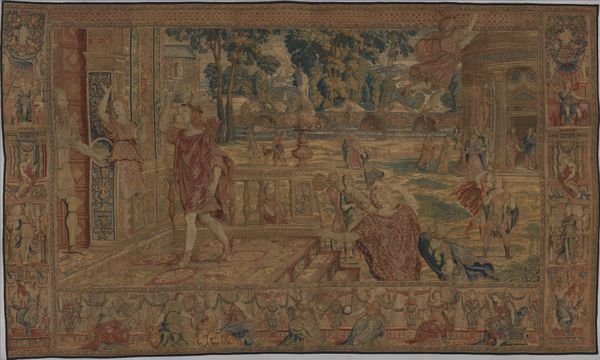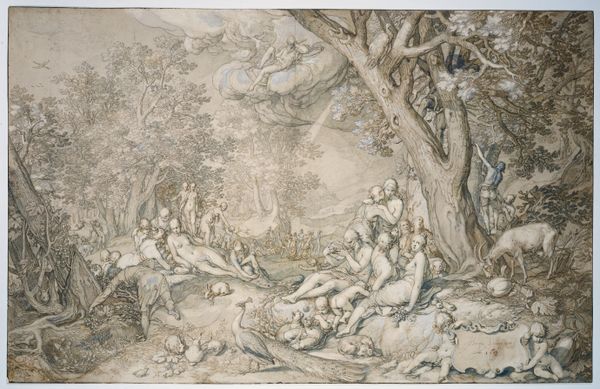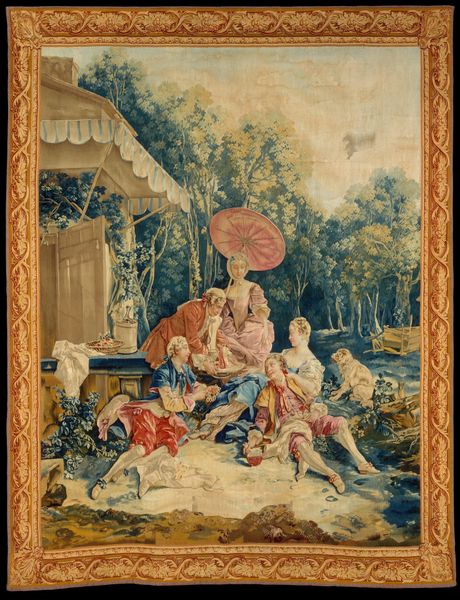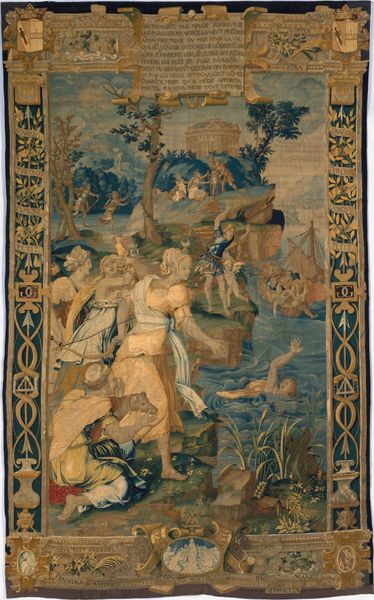
painting, oil-paint, textile, sculpture
#
allegory
#
baroque
#
painting
#
oil-paint
#
landscape
#
textile
#
figuration
#
oil painting
#
female-nude
#
sculpture
#
genre-painting
#
history-painting
#
academic-art
#
decorative-art
Dimensions: 136 1/2 x 216 1/2 in. (346.7 x 549.9 cm)
Copyright: Public Domain
Editor: This tapestry, “Diana and her Nymphs,” created sometime between 1600 and 1662 by Laurent de La Hyre, presents a really serene, almost dreamlike scene. Knowing it’s a textile, I'm wondering how that material informs its reading, and about the process of creating something so massive. What do you see in this piece? Curator: For me, understanding the material context is key. Tapestries of this scale were major commissions, costly investments intended to display wealth and status. Consider the sheer labor involved – the wools, silks, and dyes, and the specialized weaving skills that would have taken years to develop, essentially a collaborative workshop endeavor to translate paintings into tapestries for domestic settings. This shifts our focus from individual artistic genius to the socio-economic systems supporting its creation. How does knowing that it's decorative change the way we value it compared to an easel painting from the same period? Editor: That makes me rethink my initial reaction. Knowing it was intended for display changes things. Were tapestries viewed as “lesser” art forms compared to painting, despite the intensive labor? Curator: That's precisely the point. The art world then, as now, established hierarchies. Paintings were often considered “higher” art because they showcased individual virtuosity. Tapestries, associated with craft and interior design, were sometimes dismissed as purely decorative. But is that fair? Think about the immense skill and organization required, and the use of textile itself. Where did these expensive materials come from, who made them, how far did they travel? Editor: So, viewing "Diana and her Nymphs" through a materialist lens reveals not just the depicted scene but also the labor, economy, and societal values embedded within its creation. Curator: Exactly. By considering the materials, process, and cultural context, we gain a much richer and more complex understanding of this work. It makes one think about how labor and luxury coexist. Editor: This has given me a whole new perspective on considering the means and conditions of artistic production. Thanks.
Comments
No comments
Be the first to comment and join the conversation on the ultimate creative platform.
